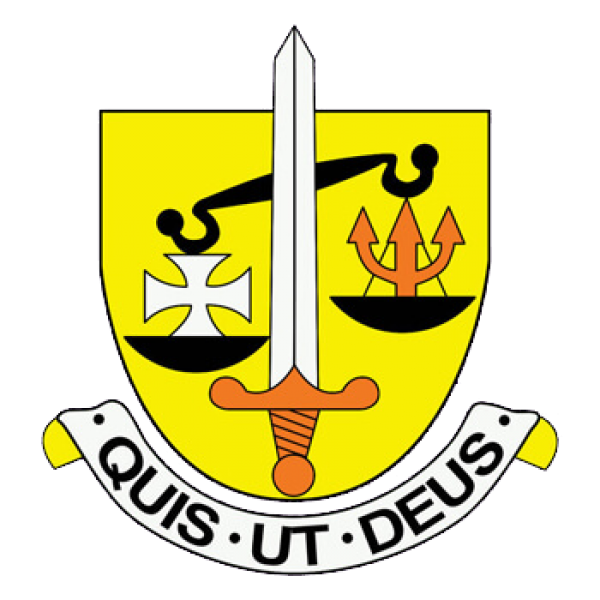St Michael's and The Loreto Trust
MARY WARD
In 1609, Mary Ward founded one of the first groups of active religious women in the Church, the Institute of the Blessed Virgin Mary, known in Ireland and throughout the world as Loreto Sisters.
Mary, an English woman, was born in Yorkshire in 1585 during the reign of Elizabeth I, when a youthful Shakespeare was trying to etch out a career as a poet and play write.
Mary lived in an age of religious intolerance. Her parents were devout Catholics at a time when Catholics were being persecuted for their faith. Her maternal grandmother spent fourteen years in prison because of her catholic faith. Some of her family also held strong political views. Two of her uncles John and Christopher Wright were involved in the Gunpowder Plot, led by Guy Fawkes, which was an attempt, in 1605, to blow up the English House of Parliament and assassinate King James I.
Inspired by the deep faith of her family, Mary felt called to follow Christ in religious life. She joined a Poor Clare Community in St. Omer in Flanders, now northern France. However, it quickly became apparent that God had a different plan! Mary wanted to follow Christ in a ‘new way’, free from religious enclosure and ready to step out to new possibilities.
She returned to London and worked tirelessly, caring for the sick, visiting prisoners, offering catechesis and supporting those struggling with their faith. A number of women joined her, ready to embark on a new adventure, a quest to follow Christ and spread the message of the gospel. Towards the end of 1609, these six companions, Mary Ward, Mary Poyntz, Jane Browne, Catherine Smith, Suzanna Rookwood and Winefrid Wigmore left London for St. Omer and opened a school mainly for English emigrants.
At first Mary struggled to find the form of religious life which suited her dream, where the members would be free from enclosure and ready to undertake whatever was needed to support the faith and spread the Gospel. However, in 1611, God intervened in a special way again, inspiring her to ‘take the same as the Society’. She now had clarity. Her rule and way of life for her members was to be based on the apostolic life of the Jesuits. She wished her members to be dressed in the ordinary clothes of the time, not to be confined by monastic enclosure and, most controversially, to be self governing without any interference from male congregations or bishops.
These demands were in contradiction to the norms of the Council of Trent and presented great difficulty for the leadership of the post reformation church. While the Pope expressed interest in her work, he was prevented by Church law of the time from giving his approval. Mary went to Rome to plead her case. During these years she travelled extensively throughout Europe, mainly on foot, opening new houses and seeking support for her cause. Schools were established in Belgium, Bavaria, Austria, Hungary, Italy.
However, despite the success of the schools and local support for their work, the cardinals of the Inquisition objected to her plans and, hence, to Mary Ward herself, her companions, their ideals and work. In 1631, at the cardinal’s insistence, Pope Urban VIII signed a Bull of Suppression, condemning Mary as a ‘heretic, schismatic and rebel to the Holy Church’. She was imprisoned in Munich. Her Institute was pronounced to be ‘suppressed, extinct, uprooted and abolished’. The schools were closed and the members of the Institute dispersed. While Mary was eventually released from prison, her life’s work had been shattered. With a few faithful companions, Mary returned to her native Yorkshire and died there in 1645.
Nevertheless, this was not the end!
Despite the suppression, some of Mary’s companions, in London, Paris and Munich, continued to live together as lay people in community. Under the patronage of the Elector of Bavaria, the school in Munich reopened. These companions kept the vision alive and continued to petition for approval for Mary’s dream. Recognising that this could not be given by the Church, in 1703 they were forced to abandon her controversial proposals and agreed to live by a limited rule based on the Ignatian way of life. They were specifically forbidden to make reference to Mary Ward as their founder. Despite this injunction, they managed to keep her spirit alive. It was not until 1909, three hundred years after she began her work, that Pope Pius X eventually lifted the ban and Mary Ward became recognised as foundress of the Institute.
Today, two congregations, the Institute of the Blessed Virgin Mary (Loreto Sisters) and the Congregation of Jesus (CJ) look to Mary Ward as their founder. Their members can be found in many and varied ministries throughout the world, from Ireland to Peru, Chile to Vietnam, Mongolia to South Sudan. Mary Ward stands as a beacon of hope for our world today. A woman who loved the church yet was not afraid to speak her truth in the name of God. Her resolute and faith filled spirit shines through all the difficulties of her life. She lived with a true inner freedom. Even when challenged by the church she loved, she never wavered from her vision. Knowing the great gift of God’s love in her life, she assured her followers that their ‘greatness and strength consists in this, that [they] have free and open access to God’. Today, we as Loreto Sisters endeavour to follow her dream of serving Christ as courageously as she did.
ALL LORETO SCHOOLS AND COMMUNITIES ENDEAVOUR TO LIVE BY THE SEVEN CORE VALUES OF MARY WARD WHICH ARE CENTRED IN GOD AND ROOTED IN THE GOSPEL.
-
JUSTICE
-
SINCERITY
-
TRUTH
-
JOY
-
FREEDOM
-
EXCELLENCE
-
INTERNATIONALITY

